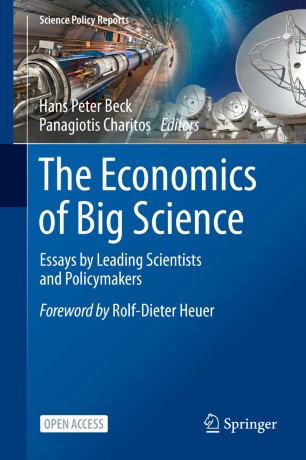
Investment in science – whether in education and training or through public funding for developing new research tools and technologies – is crucial for progress. In a book that was just published as part of Springer’s Science Policy Reports, authors from big research laboratories and organizations, funding agencies and academia discuss how investing in science can produce societal benefits, as well as identifying future challenges for scientists and policy makers.
The volume cites different ways to assess the socio-economic impact of Research Infrastructures and their role as hubs of global collaboration, creativity and innovation. It highlights the different benefits stemming from fundamental research at the local, national and global level, while also inviting us to rethink the notion of “benefit” in the 21st century.
Public investment is required to maintain the pace of technological and scientific advancements over the next decades. The authors discuss ways for maintaining a strong foundation of science and research to ensure that we continue to benefit from the outputs.
The volume draws inspiration from the first “Economics of Big Science” workshop which was held in Brussels in June 2019 with the aim of creating a new space for dialogue and interaction between representatives of Big Science organizations, policy makers and academia.
CI expert and Liverpool’s Head of Department Prof Dr Carsten P Welsch contributed to the book and his chapter highlights how fundamental science has driven revolutionary transformations of technology and society. He also describes how ‘training the next generation’ is a very important drivers of science and economic progress. He said: “Public investment in curiosity-driven research (…) provides an important stimulus for innovation as R&D companies tend to concentrate around vibrant scientific communities that provide much-needed talent. By renewing and strengthening investment in basic science, the way to an even brighter future can be paved.”
You can access the full book in Open Access format here:
